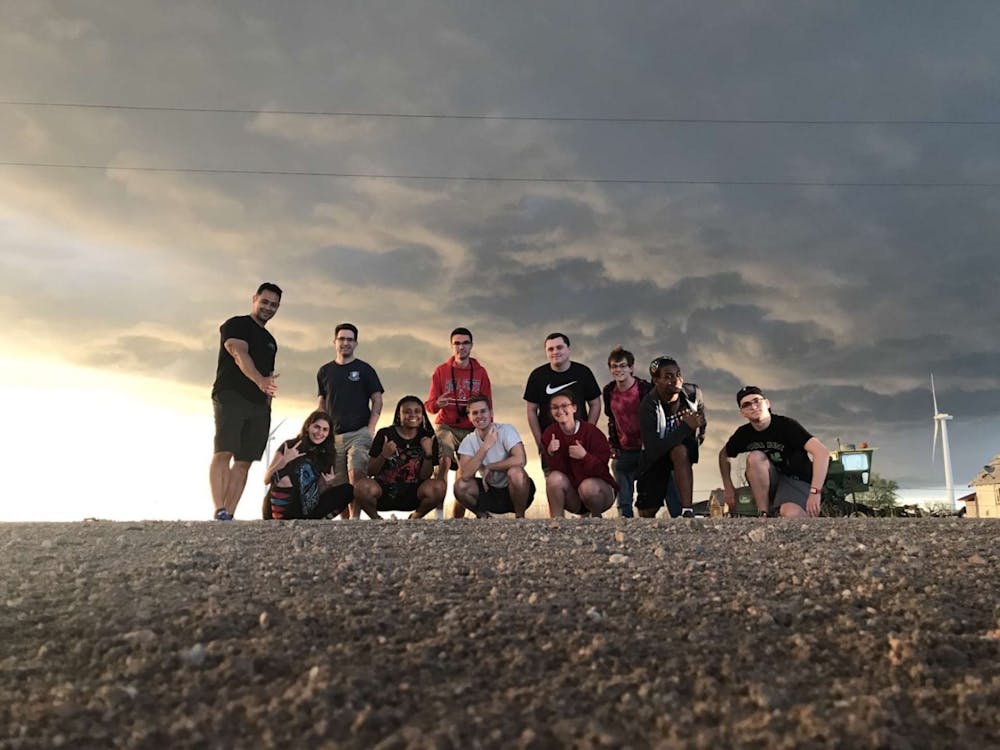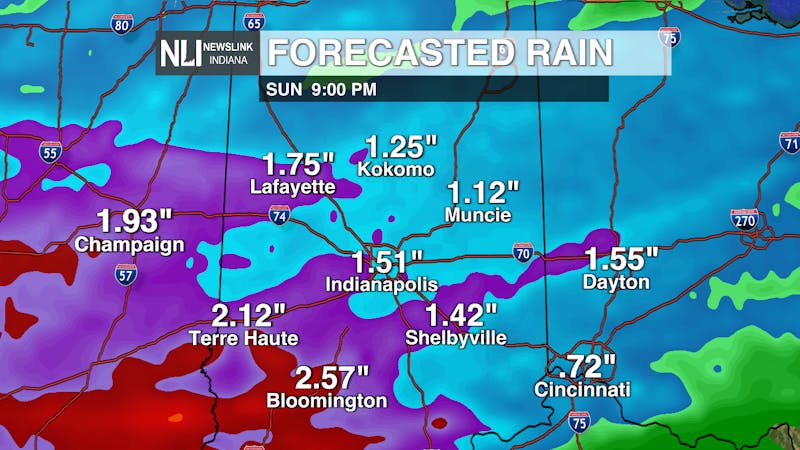When former Ball State assistant professor of geography and meteorology David Arnold’s home in the San Francisco Bay area got exciting weather, he thought “it was the coolest thing in the world.”
Arnold spent years immersed in the Sierra Nevada Mountains, absorbing nature while working at a hotel and because of his inspiration from the mountains, it regenerated his enthusiasm for weather. He studied geography and climatology at the University of Idaho, filling his schedule with atmospheric science courses. Getting a bachelor’s degree all the way up to a PhD, he wouldn’t become a meteorologist or climatologist — he would teach others how to chase storms.
Arnold took his passion for weather with him to Mississippi State University, where he began teaching weather in 1993. He quickly noticed a number of students with an interest in weather similar to his own, inspiring him to create the nation’s first storm chasing program for college students while at Mississippi State.
“Lots of students would find their ways on top of roofs to look at the severe thunderstorms and tornadoes,” Arnold said. “I knew this program would further develop their passion for learning about the atmosphere.”
Arnold accepted a position as an assistant professor at Ball State in 1998, and the university requested he create a weather and climate program for its curriculum after seeing his success at Mississippi State. He proposed the courses through the university infrastructure and got them approved, but he knew understanding storms took more than lectures and a classroom.
Arnold set out to provide students with “real-time, real-life knowledge about these storms” through experience and immersion. He created “a mobile classroom” and took his first group of students on a multi-week trip to hunt down severe storms and tornadoes in 1999. But, the trip Arnold can most recall is the trip of 2004, where students saw 16 tornadoes in one day.
“We had gained a lot of exposure through the press,” Arnold said. “That day, a reporter and a camera crew joined our trip. It was very unlikely to see that many tornadoes. Sometimes, you don’t see any.”
Arnold left Ball State in 2006, but the program was taken over by Dave Call, associate professor of geography, who came to Ball State in 2007.
“My mom and I did a science project when I was in kindergarten. I visited a weather channel in Atlanta and, eventually, it became my career,” Call said. “Tornadoes weren’t my thing as much. I think I’m much more grounded … I attempted to chase a few times in college but with little success.”.
Ball State asked Call if he was willing to take over the storm chasing program. Wanting to sound agreeable and thinking it sounded interesting, he accepted the offer and has been the class’s coordinator ever since, he said.
The storm chasing class lasts about two to three weeks in late May. The first part of the class is more lecture-oriented than interactive. Students learn how storms work and how to navigate around them safely.
Call said the most hazardous part of the trip isn’t the storms — it’s the driving. A trip around the Great Plains is about 6-7,00 miles and averages 450 miles per day.

A tornado producing storm is depicted May 30, 2021. Storms is the west are bigger and more isolated than the ones in Indiana. Dave Call, Photo Provided.
“Sleepy truckers, crazy animals or other things — when we’re near a storm, there can be wet roads, ice slick and road debris,” Call said.
While the class wasn’t offered in 2020 due to COVID-19 concerns, it started up again in 2021. Call said the class is an “invaluable experience,” preparing students for their meteorological-filled futures.
“These students are going to be the ones that are on TV, showing live warnings and showing when things are dangerous,” he said. “This trip allows them to practice these things in a controlled environment. If they screw up, they’re not going to get people killed because of an incorrect forecast. They get confidence by doing it themselves.”
Rachel Wynalda, Joe Forbeck and Lance Huffman are all climatology and meteorology students who traveled on the 2021 storm chasing trip.
“You can really appreciate the power of a tornado,” said Wynalda, who wants to work for the National Weather service. “It’s so cool to see a storm form — it makes you appreciate storms in general.”
Wynalda said the most memorable part of the trip was being interviewed by Angela Buchman, a meteorologist from WTHR in Indianapolis. Wynalda and her classmate, Alexander Duffus, had the chance to talk to Buchman regarding the May 2021 trip via Zoom.
The students participate in different roles throughout the class. The class is one month during the summer with one safety training week and three weeks of travel and storm chasing.
Wynalda and Forebeck’s favorite role was being a chase lead — the person who essentially got to “call the shots for the day,” Wynalda said.
Although he enjoyed being a chase lead, Huffman also enjoyed being a radar technician — the student who watched the radar, kept everything in tune and informed anyone if anything showed up on the radar.
When going to the Rockies on his storm chasing trip, Huffman said he thought, “Wow, this is one of the more amazing things I’ve seen.” He recommends the trip to Ball State students even if they’re not interested in weather for their major.
“This is an experience that has adventure in it,” Huffman said. “Even if you’re not in it for the weather, you can see it for everything else.”
Call said while most students who join the class typically have an interest in storms, all students are welcome to register, even if their major isn’t climatology, meteorology or geography.
“If you find the weather somewhat interesting and you like road trips, then this is for you,” Call said. “We don’t know where we’ll end up when we wake up that morning. Most of the time, it’s forecasting, driving and waiting. That’s where all of your time goes — the preparation. All of that work pays off when you actually see something.”
Contact Tori Smith with comments at tnsmith2@bsu.edu or on Twitter @tori_ncl_writer.





The Daily News welcomes thoughtful discussion on all of our stories, but please keep comments civil and on-topic. Read our full guidelines here.